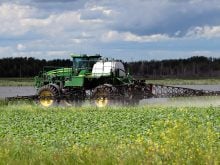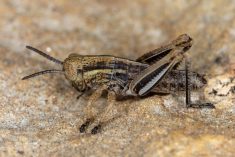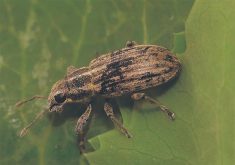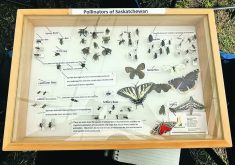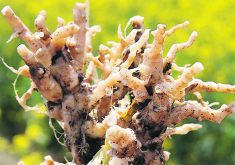Soil likely wasn’t warm enough for the insects to be active when a widespread storm blanketed much of the Prairies
A late April storm that dumped a thick blanket of snow across much of Western Canada will replenish soil moisture reserves in drought-stricken regions of the southern Prairies.
But it won’t likely damage grasshopper populations, according to insect experts at the Prairie Pest Monitoring Network (PPMN).
That’s because grasshoppers, which enter diapause, a period of suspended development during fall and winter months, likely hadn’t resumed growth when the April snowfall occurred.
Grasshopper development typically resumes in the spring when the average daily temperature is above 10 C, said PPMN scientist and Agriculture Canada entomology expert Meghan Vankosky.
Few if any locations on the Prairies would have been that warm before the April snowstorm.
“In the spring, we usually do expect that cold, wet weather is going to have some kind of a negative effect on grasshoppers,” Vankosky said in an April 27 interview.
“But at this point, it’s probably too early to have an impact yet.”
Wet soil conditions are not as critical as soil temperature in terms of grasshopper egg mortality.
“When we talk about the wet weather being bad for grasshoppers, that’s more the case once the grasshoppers are hopping around as nymphs,” Vankosky explained.
“Wet conditions (after nymph emergence) make the grasshoppers more prone to fungal infection, which can kill those young grasshoppers….”
In other words, the weather conditions over the next four to six weeks will ultimately determine grasshopper populations.
Vankosky said grasshopper risk maps prepared by the PPMN suggest a high grasshopper risk in many areas of Western Canada this year, particularly in southern regions.
Grasshopper densities were high late last summer and warm weather that lasted almost until the end of October were conducive to adult egg laying and egg development prior to diapause.
Conditions favourable to egg development in fall give eggs a better chance of surviving the winter.
Egg mortality can occur in the winter, particularly if winter temperatures are extremely cold and soil temperatures drop to around -15 C.
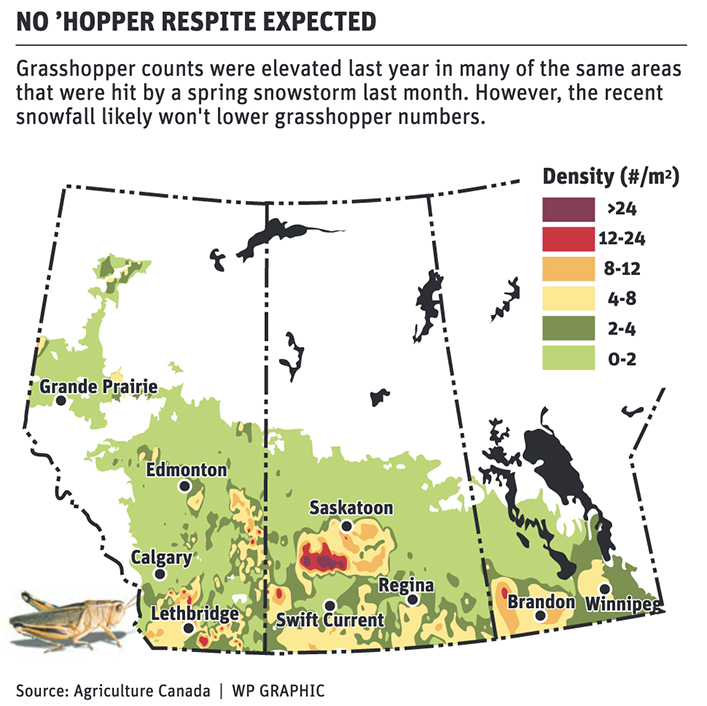
But conditions this winter were not conducive to high grasshopper death rates.
“Based on what we saw in the field late last summer and into the fall, grasshopper populations were the highest we’ve seen them in quite a while…,” Vankosky said.
Early-season scouting will be important for growers in high-risk areas, Vankosky added.
Grasshoppers typically like to lay their eggs in areas that have some exposed, looser soils that are south facing and receive direct sunlight.
Growers should walk in ditches and along field edges, looking for first in-star nymphs. Grasshopper monitoring protocols can be viewed on the PPMN’s website at prairiepest.ca.
“Early in the spring, scouting is going to be important, and not just scouting in the field but also in the roadsides,” Vankosky said.
“Controlling the population when the grasshoppers are young and small is going to be more effective than waiting until they are more mature.”




